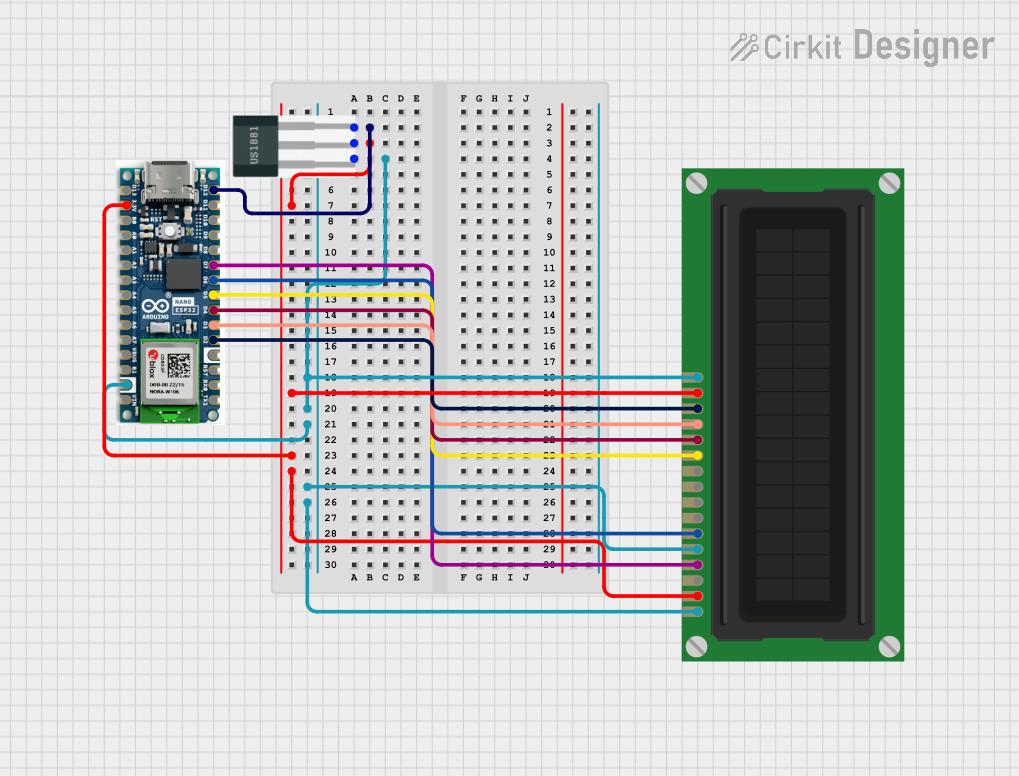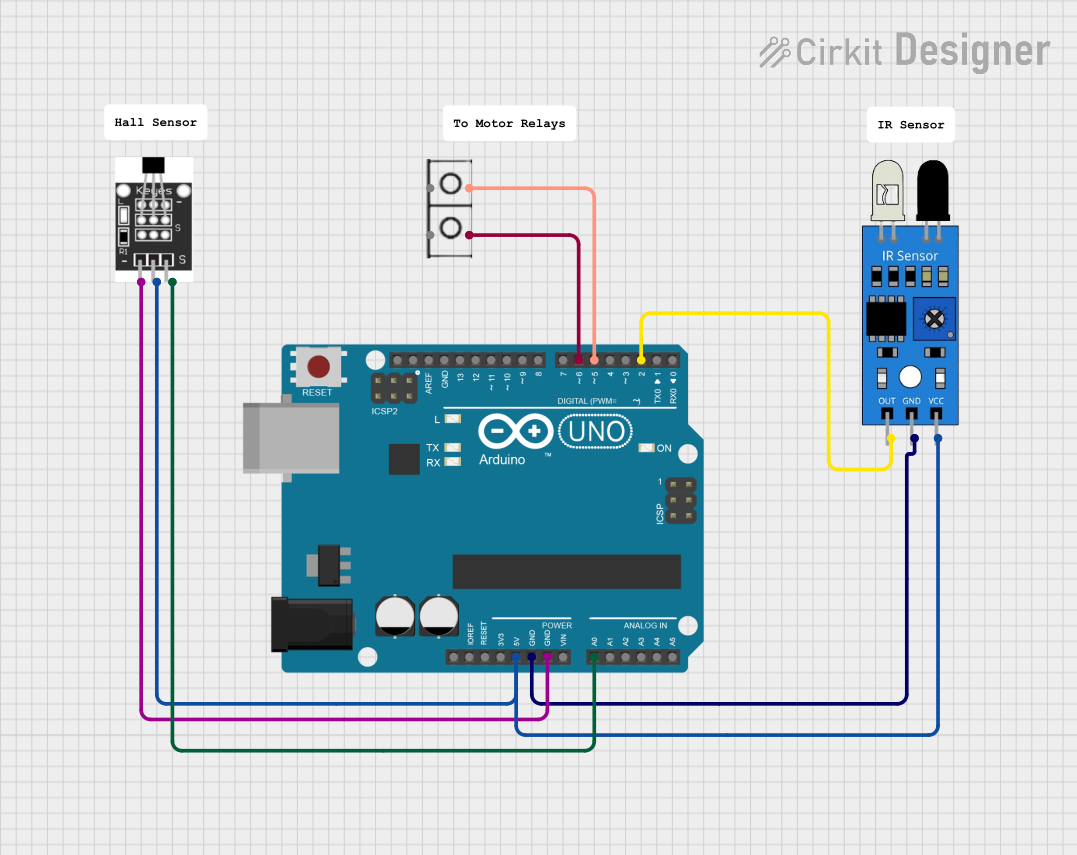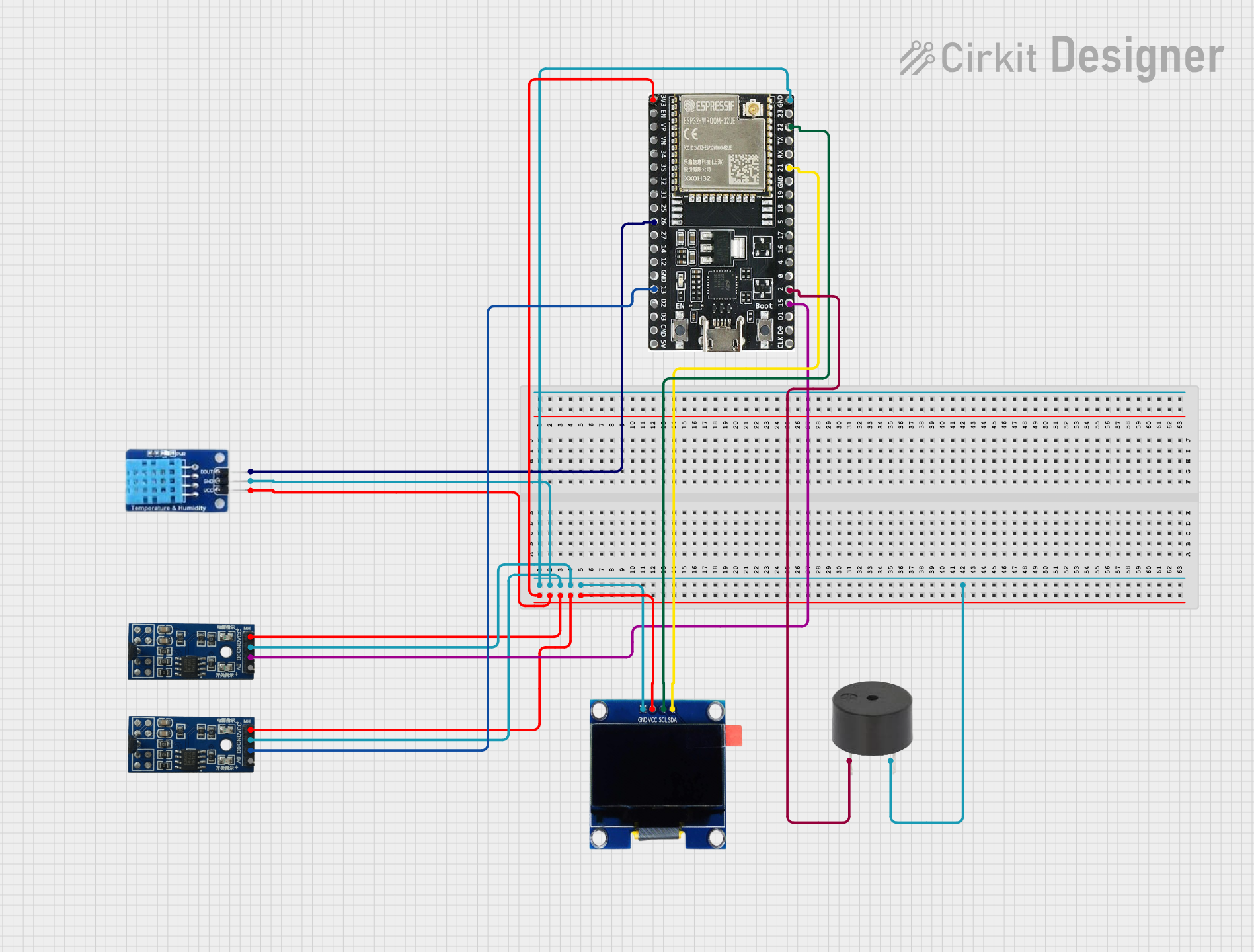
How to Use Hall Sensor: Examples, Pinouts, and Specs

 Design with Hall Sensor in Cirkit Designer
Design with Hall Sensor in Cirkit DesignerIntroduction
A Hall sensor is an electronic device that detects the presence and magnitude of magnetic fields. It operates on the principle of the Hall effect, which is the production of a voltage difference (Hall voltage) across an electrical conductor, transverse to an electric current in the conductor and a magnetic field perpendicular to the current. Hall sensors are widely used in various applications, including position sensing, speed detection, and current sensing.
Explore Projects Built with Hall Sensor

 Open Project in Cirkit Designer
Open Project in Cirkit Designer
 Open Project in Cirkit Designer
Open Project in Cirkit Designer
 Open Project in Cirkit Designer
Open Project in Cirkit Designer
 Open Project in Cirkit Designer
Open Project in Cirkit DesignerExplore Projects Built with Hall Sensor

 Open Project in Cirkit Designer
Open Project in Cirkit Designer
 Open Project in Cirkit Designer
Open Project in Cirkit Designer
 Open Project in Cirkit Designer
Open Project in Cirkit Designer
 Open Project in Cirkit Designer
Open Project in Cirkit DesignerCommon Applications and Use Cases
- Position Sensing: Detecting the position of a magnet attached to a moving part.
- Speed Detection: Measuring the speed of a rotating object by detecting the passage of magnets.
- Current Sensing: Inferring current flow through a conductor by measuring the magnetic field around it.
- Motor Control Systems: Providing feedback on the rotor's position in brushless DC motors.
- Security Systems: Acting as magnetic switches in door and window sensors.
Technical Specifications
Key Technical Details
- Supply Voltage (Vcc): 3.3V to 5V DC
- Output Type: Digital (on/off) or Analog (proportional to magnetic field strength)
- Sensitivity: Typically in the range of millivolts per Gauss
- Operating Temperature Range: -40°C to 85°C (may vary by model)
Pin Configuration and Descriptions
| Pin Number | Name | Description |
|---|---|---|
| 1 | Vcc | Power supply input, typically 3.3V to 5V DC |
| 2 | GND | Ground connection |
| 3 | OUT | Output signal, can be analog or digital depending on the sensor type |
Usage Instructions
How to Use the Component in a Circuit
- Power Supply Connection: Connect the Vcc pin to a 3.3V or 5V power supply and the GND pin to the ground.
- Output Connection: Connect the OUT pin to an analog or digital input on a microcontroller, depending on the output type of the Hall sensor.
- Magnetic Field Detection: Place a magnet near the sensing area of the Hall sensor. The output will change based on the presence and strength of the magnetic field.
Important Considerations and Best Practices
- Magnetic Field Orientation: Ensure that the magnetic field is perpendicular to the Hall sensor for accurate readings.
- Noise Reduction: Use capacitors near the power supply pins to filter out noise and voltage spikes.
- Shielding: To prevent interference from external magnetic fields, consider using magnetic shielding materials around the sensor.
- Temperature Effects: Be aware that temperature variations can affect the sensor's performance and calibrate accordingly.
Example Code for Arduino UNO
// Example code for interfacing a Hall sensor with an Arduino UNO
int hallPin = 2; // Digital pin connected to Hall sensor's output
int hallState = 0; // Variable to store the Hall sensor state
void setup() {
pinMode(hallPin, INPUT); // Initialize the hallPin as an input
Serial.begin(9600); // Start serial communication at 9600 baud rate
}
void loop() {
hallState = digitalRead(hallPin); // Read the state of the Hall sensor
if (hallState == HIGH) {
// If the Hall sensor detects a magnetic field
Serial.println("Magnetic field detected!");
} else {
// If the Hall sensor does not detect a magnetic field
Serial.println("No magnetic field detected.");
}
delay(500); // Wait for half a second before the next read
}
Troubleshooting and FAQs
Common Issues Users Might Face
- Inconsistent Readings: If the sensor provides erratic readings, check for proper power supply stability and magnetic interference from nearby sources.
- No Output Signal: Ensure that the magnet's polarity is correct and that it is close enough to the sensor. Also, verify the connections and the integrity of the sensor.
Solutions and Tips for Troubleshooting
- Stabilize Power Supply: Use capacitors to stabilize the power supply to the Hall sensor.
- Check Connections: Re-examine the wiring and solder joints for any loose connections or breaks.
- Sensor Replacement: If the sensor fails to respond and all other components are functioning correctly, consider replacing the sensor.
FAQs
Q: Can a Hall sensor detect any type of magnet? A: Hall sensors are sensitive to permanent magnets and can detect both north and south poles.
Q: How far can a Hall sensor detect a magnet? A: The sensing distance depends on the magnet's strength and the sensor's sensitivity. Typically, it is in the range of a few millimeters to centimeters.
Q: Can Hall sensors be affected by environmental factors? A: Yes, temperature variations can affect the sensor's performance. Some Hall sensors are designed with temperature compensation to mitigate this effect.